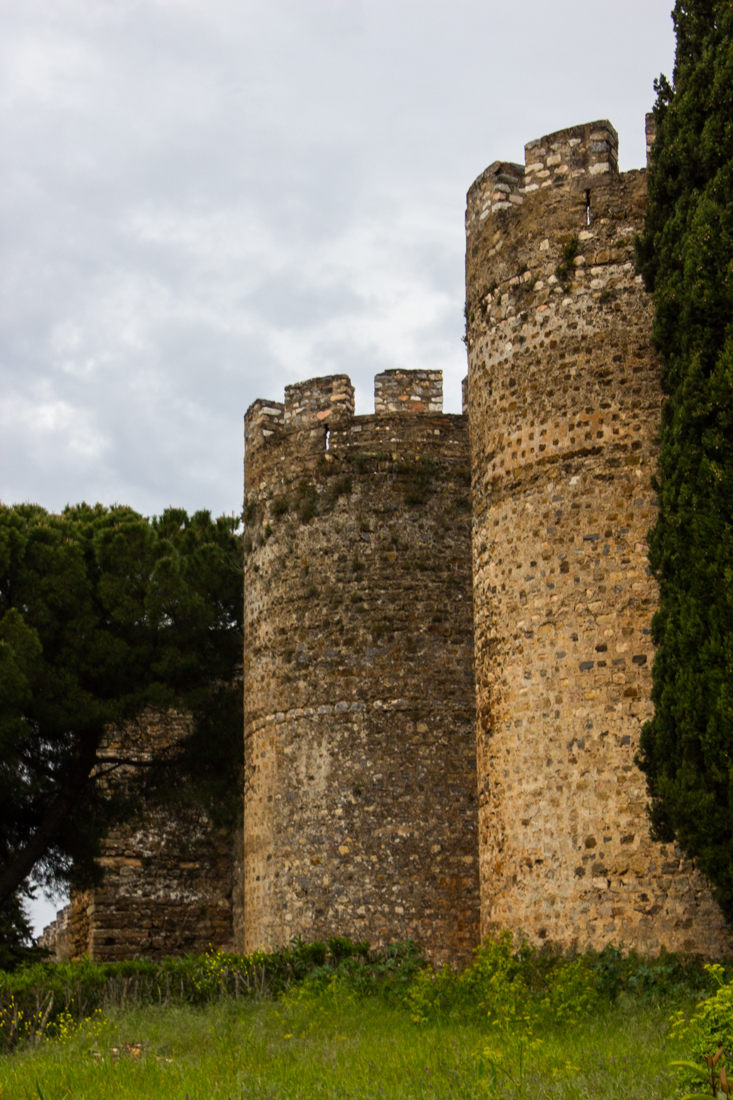Vila Viçosa started life as a small Roman settlement which then became part of the Visigoth Kingdom, and in the 8C the Moors gained control. The Order of Avis reconquered the area in 1217 and in the early 14C King Dinis I built a Castle in Vila Viçosa to protect the Mediaeval town from the Spaniards. In 1461 the Dukes of Braganza took ownership of the town and moved into the Castle. But by 1501 the Dukes were tired of the Mediaeval residence and work started on the splendid marble-clad Ducal Palace.
The image taken from Google Maps shows the walls of the Mediaeval village, the five gates, the Church of Conceição and the Castle on top of the hill.

For a long time the architectural heritage of Portugal was neglected but as awareness grew of the importance of historical buildings so the sites were opened up again. The photographs of Vila Viçosa below are undated but are perhaps 1900-50?



The Gateway of the Tower is hidden behind a square tower and nearby is a 17C (?) Pillory, 8 metres high and with curious, somewhat menacing frogs (?) at its foot.


The Town Gate is protected by round towers and the gateway leads into a few streets of low houses, and walled gardens below the Church of Our Lady of the Immaculate Conception (Nossa Senhora do Conceição.) The imposing bronze statue near the Gate seems to be a soldier of the 17C…




From the top of the castle there are wide views over the town and the countryside. The castle building itself is protected by walls, a moat, and a drawbridge inside the walls of the Mediaeval Village.



The Church of Conceição (originally Santa Maria do Castelo) is just below the Castle and prominent in the old photographs above. This Church is important because it holds the statue (14C) of Nossa Senhora do Conceição who was crowned Patron Saint of Portugal by King Joao IV in 1646. Inside the building is calm and spacious and with a dim light reflected from walls covered in 17C blue and yellow tiles.


You may be interested in
Castles in Portugal
The early history of Portugal – Romans & Visigoths, with maps, and here for the Reconquista
Good information on all of Portugal, and a map with the sites for Vila Vicosa








Anne Guy
An interesting place to visit!
saltofportugal
Great photos of Vila Viçosa!
Candy Blackham
Thank you! There are more to come as I visited museums, the Ducal Palace and its gardens, and then just wandered. But there are still corners of Vila Vicosa which I have missed – The Royal Park, and the Senhora da Lapa Church. And places to which I could easily return…
Candy Blackham
Thank you! I enjoy your blog very much and will be linking wherever possible.
worldinsidemypocket
Beautiful pictures, love the history you’ve given 🙂
Candy Blackham
Thank you! I am at the beginning of this visit to Portugal so I hope you will stay with me!
worldinsidemypocket
Of course, I’ve followed your blog, check out mine if you have any time I’m a newbie and could do with some feedback 🙂